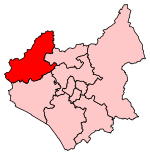Califat Coal Mine
Coal mines in EnglandVague or ambiguous geographic scope from November 2023
The Califat Coal Mine began in 1852, when William Worswick signed a lease with Wyggeston Hospital, Leicester. The Coleorton No 2 Colliery was then sunk. It was named after the town of Calafat, now in Romania, then in the Ottoman Empire, which was under siege by Russian forces. The site has been subject to various excavations and restorations since the 1960s.
Excerpt from the Wikipedia article Califat Coal Mine (License: CC BY-SA 3.0, Authors).Califat Coal Mine
St. George's Hill, North West Leicestershire
Geographical coordinates (GPS) Address Nearby Places Show on map
Geographical coordinates (GPS)
| Latitude | Longitude |
|---|---|
| N 52.7508 ° | E -1.3903 ° |
Address
Hough Mill
St. George's Hill
LE67 8QU North West Leicestershire
England, United Kingdom
Open on Google Maps




